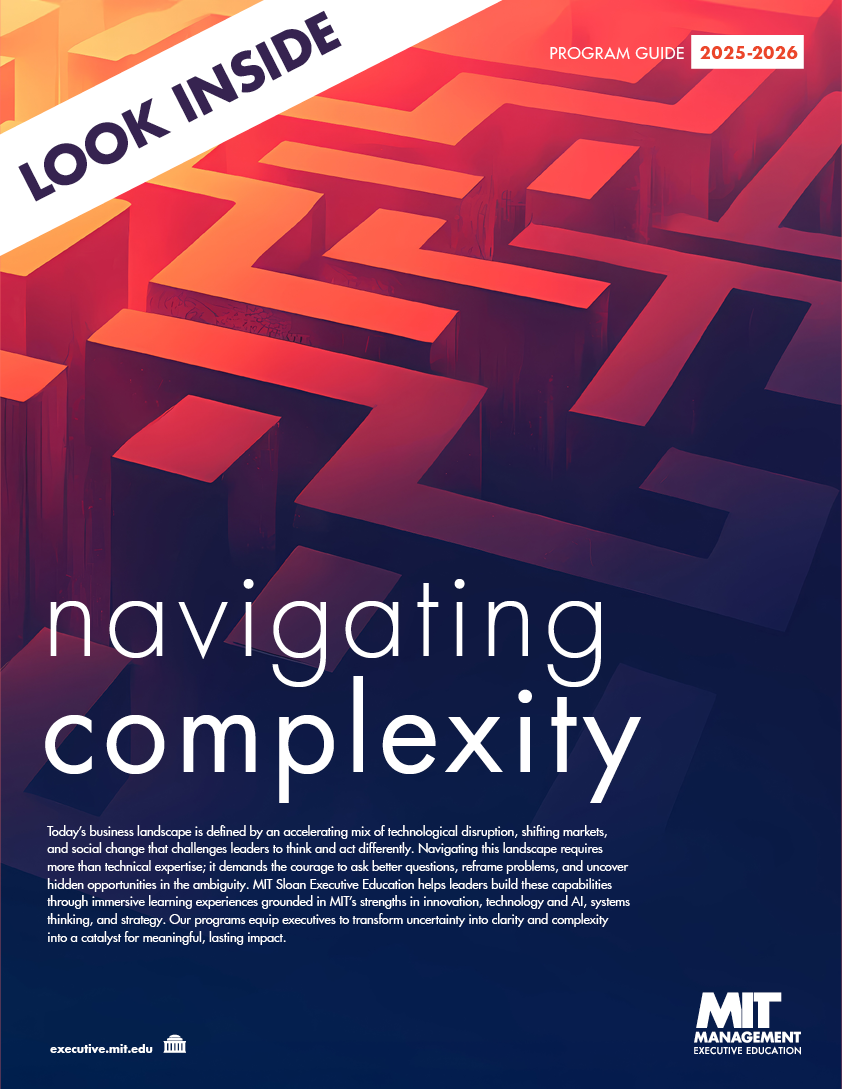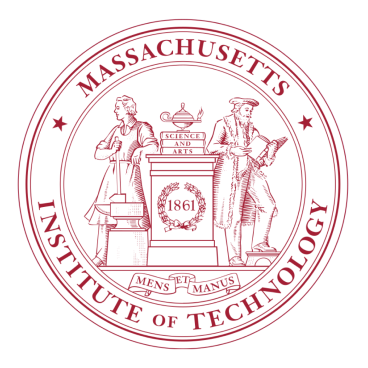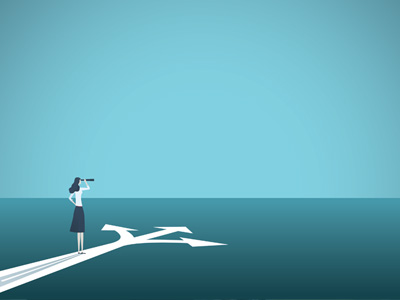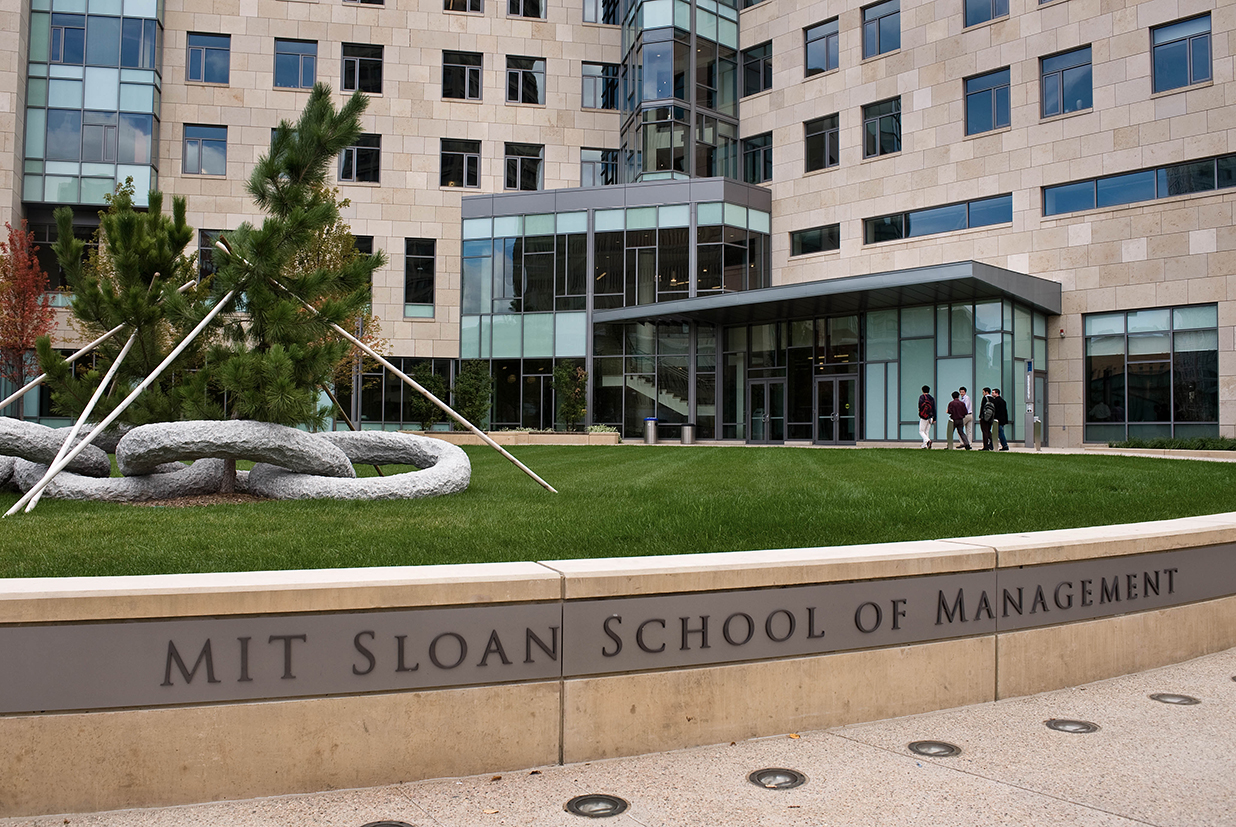In a corporate culture that celebrates authority, mastery, and leaders who have answers, what role do curiosity and creativity play? Especially considering that both knowing and asking propel innovation—innovation we rely on during uncertain times.
MIT Sloan professor Steven Eppinger and Queensland University of Technology professor Marek Kowalkiewicz addressed this dynamic tension as part of the Future Enterprise webinar series hosted by MIT and QUT.
For Eppinger, intersections between design thinking and agile project management (or agile) provide useful insight into how curiosity can be fostered at the enterprise level. Whereas human-centered design thinking calls for extensive creative exploration of a problem, agile is a highly prescriptive method for accelerating learning and discovery, created for software development. (Eppinger teaches these methods in his executive education courses Mastering Design Thinking and Managing Complex Technical Projects, respectively).
“Can we use the formal set of roles and events in agile and still give people an environment in which they can use curiosity to come up with innovative solutions?” Eppinger asked.
While these methods may seem paradoxical, Eppinger has identified fruitful ways design thinking and agile converge through his work with people using the latter outside the software industry. He gave the example of a multinational packaged-food company focused on meat and cheese that developed a chip snack using agile, exclusively in part-time sprints.
The success of endeavors like these, according to Eppinger, result from the structure and feedback processes agile lends to more creative work, in addition to an exploratory stance (embracing questions) that spurs improvement.
Both Eppinger and Kowalkiewicz noted that being creative or curious doesn’t always come easy. Kowalkiewicz offered a useful distinction between curiosity and creativity: curiosity emphasizes learning and discovery without the action creativity implies. It is possible, he noted, for people to be curious without being creative and vice versa. So, what can businesses do to help team members at varying levels of comfort with curiosity (not to mention image-conscious leaders) embrace the practice?
"You just have to get comfortable overlaying a little structure, a little process, over your creative activities."
Enhancing curiosity company wide
Eppinger and Kowalkiewicz are experts in using creativity and inquiry to strengthen business outcomes. Here are four suggestions from their discussion that can help organizations bolster curiosity.
- Structure benefits ingenuity: Being somewhat prescriptive about curiosity is valuable, especially because systematic processes (for example, consistently scheduled “sprints”) formalize space and time for innovation. As Eppinger said, “You just have to get comfortable overlaying a little structure, a little process, over your creative activities.” He also acknowledged that the type of structure (and method for applying agile) should be customized based on industry.
- Questions trump answers: Although it can feel uncomfortable to display uncertainty, especially for leadership, a culture that encourages questions (especially asking “why”) is ultimately more effective. Increasing team diversity and creating norms that challenge hierarchies related to expertise can help to promote curiosity and creativity. “You want a process that gets you out of the habit of seeing the most experienced person as the one with all the answers,” Eppinger said. “If we can create a culture in which we’re not expecting that at all, then we tend to listen much more inclusively to the whole range of people who are participating in an active way.”
- Free exploration matters: Businesses should encourage team members to embrace their inner flaneur (or “passionate wanderer”), which will better prepare everyone for a future we can’t anticipate. “You should make space for a certain amount of aimless exploration—aimless, which is not the same as pointless,” Kowalkiewicz said. Children do this naturally, Eppinger noted, with minimal fear of failure. “Leaders should embrace that same kind of curiosity—not only the why, but the trying and failing and testing of things,” he said. “We should not only be asking questions but trying stuff all the time.”
- Feedback closes the loop: Great minds think together—and a formal process for feedback and suggestions (whether through agile or another system) enhances results. In the case of agile, feedback happens formally during product improvement phases and during assessments of the process itself (a retrospective at the end of each sprint to reflect on areas for potential growth). “These cycles happen so quickly that, in a couple of months, a team could do three, or five, or 10 sprints and get really good at doing whatever type of work they’re doing,” Eppinger said, even if that work is creative and curiosity driven.
Steven Eppinger teaches in the Executive Education courses Managing Complex Technical Projects and Mastering Design Thinking.








